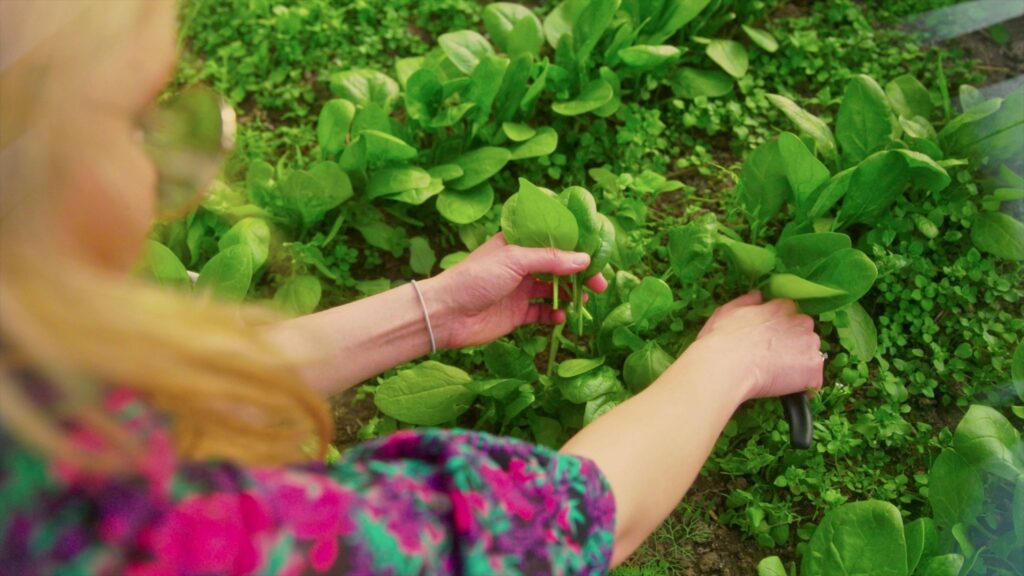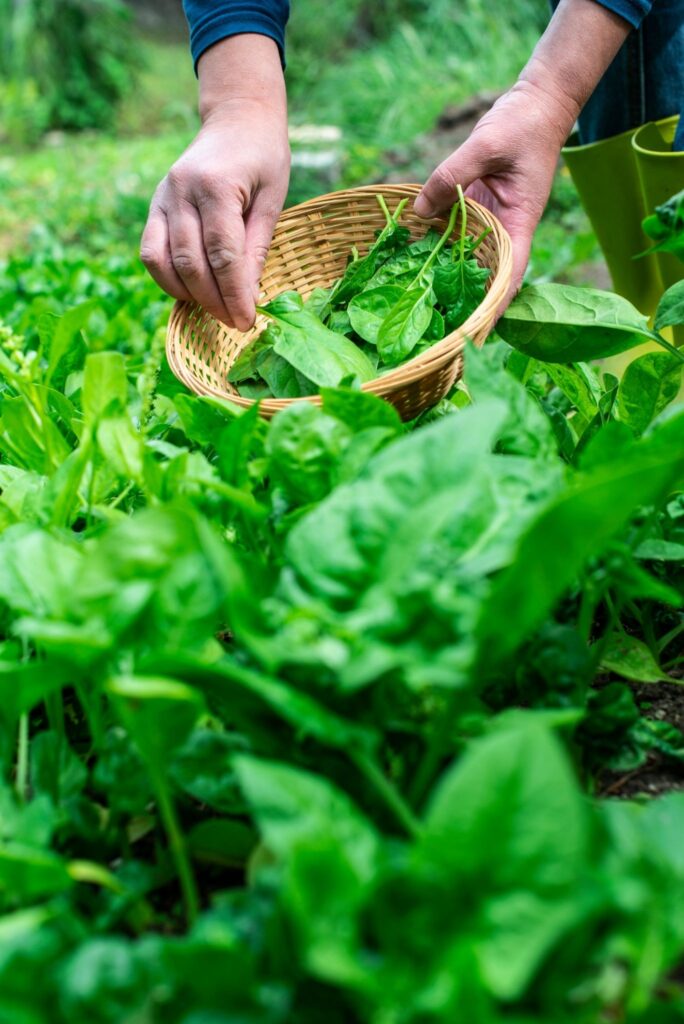Will spinach grow back after cutting? Is there a right or wrong way to harvest spinach?
It is not a surprise that spinach is a delicate crop to grow. It involves correct techniques to make sure it turns out healthy and thriving.
So today, we will learn more about how to cut spinach during harvesting to ensure its continuous growth. We will also discuss what you can do to grow the healthiest spinach for a maximum yield. Let’s dive right into it.

The Basics of the Spinach Crop
Spinach is a perennial crop that is common in Western and Central Asia. This leafy green is a nutritious vegetable that is packed with calcium, iron, and vitamins A, B, and C. It also has a good amount of antioxidants, which help to balance your immune system.
With the right conditions, you should be able to cultivate spinach in your vegetable garden. In fact, this crop grows quite fast and should be ready to harvest in as little as 25 days or up to 45 days, depending on the temperature in your area.
The optimal temperature for growing spinach is between 15 and 30 degrees Celsius. You also need an annual rainfall that should not exceed 120 cm. When grown in well-drained soil, as well as alluvial soil, you can ensure the proper growth and development of your spinach.
Harvest season is all year round, with the exception of the winter season or the months of December to February. When harvested the right way, you can regrow this crop twice or even thrice.
Will Spinach Grow Back After Cutting?
The simple answer is yes.
But it also depends on how you cut it. When done the right way, you can easily have a cut-and-grow vegetable garden!
Do take note that harvesting this crop is mainly a matter of your choice. Baby leaves should be ready once the crop turns into a rosette with up to 6 leaves. The best thing about baby spinach leaves is that the taste is much sweeter and the texture is more tender.
But if you prefer mature leaves, then you may need to wait for a few more weeks. Just be sure to harvest before your crop begins to flower or bolt. This way, you can avoid the bitter flavor. The leaves should also be dark green instead of close to turning yellow.
Why Does Spinach Bolt?
Bolting is the result of a hotter temperature. As you can see, spinach is a crop that grows best in the cooler temperature. However, when the climate gets hotter, seeds start to form and your crop begins to flower. This is what bolting is all about.
But prior to bolting, you will notice your spinach becomes taller. There are also more leaves, which taste bitter. Not too long after this phase, there will be clusters of flower buds forming, which means you need to harvest immediately.
It is also worth noting that spinach bolts when the crop nears the end of its lifespan. But this can also be the result of water stress and too much exposure to sunlight and heat.
Will Spinach Regrow After It Bolts?
As bolting refers to the end of the crop’s lifespan, it will no longer regrow once it has reached this phase.
Hence, you need to uproot the entire crop and plant a different crop instead. But if you wish to collect seeds that you wish to use for the next planting season, you can simply allow your crops to bloom.
This is why it is best to avoid the crop from bolting before it happens. You can slow the process down by planting spinach earlier in the season, which is when the peak of summer is over. As a result, you can enjoy a longer harvest time and have plenty of cooler months before it bolts.
Another way to prevent or slow down the bolting process is by providing ample water to your crops, specifically during the hotter days.
How to Regrow Spinach After Cutting

Generally, spinach regrows its leaves from its growing point. This is the part of the crop’s step that joins the roots.
You need to make sure that you leave this part unharmed. Then, the leaves can regenerate within the 4 weeks of harvesting.
If bolting does not occur, your spinach can regenerate for two cycles of regrowth or even more. Thus, you can enjoy multiple harvests per crop.
Tips for a Cut-And-Come-Again Harvesting Method
The first thing you need to do is to pay attention to how much spinach you need.
For instance, if you are only looking to get a few leaves for your meal, then you can certainly cut only the leaves you require.
Chop a few older leaves at the stem. You should take out the older, more mature leaves and allow the inner leaves to mature.
This is a great practice since you can always ensure fresh spinach growing in your garden. Since spinach is perishable, it is good to have a fresh supply from your “cut-and-come-again” vegetable garden.
But if you think you need more than a few leaves, then you must harvest the remaining leaves. Cut from the base and leave two inches off the ground. Never uproot the crop or harm the growing point.
This way, you can still allow your spinach to re-sprout and regenerate even after taking as many leaves as possible.
Final Words
With proper care and the right techniques, you can allow your spinach to grow back after cutting.
It is best to use the right tools and to prevent bolting when you harvest, so you can help the crop to regenerate continuously.
Since spinach quickly grows back after you cut it, you can definitely enjoy this vegetable in its freshest state every meal. So, cut right, enjoy your fresh spinach, and keep having a steady supply of this leafy green all year round!